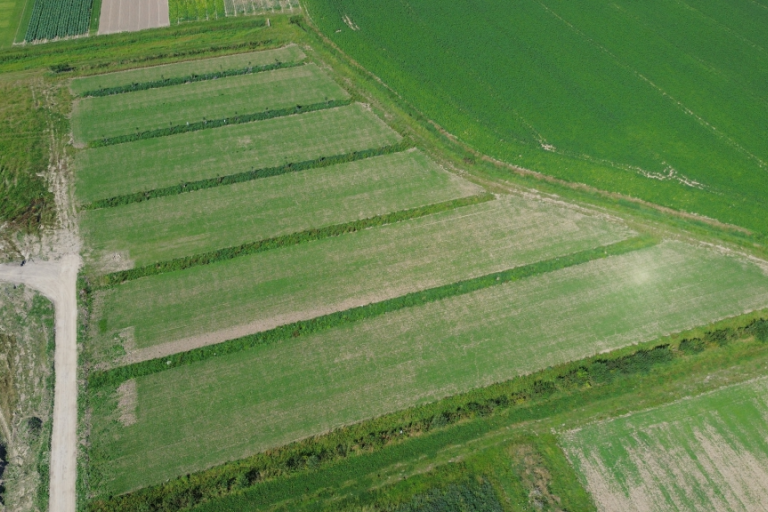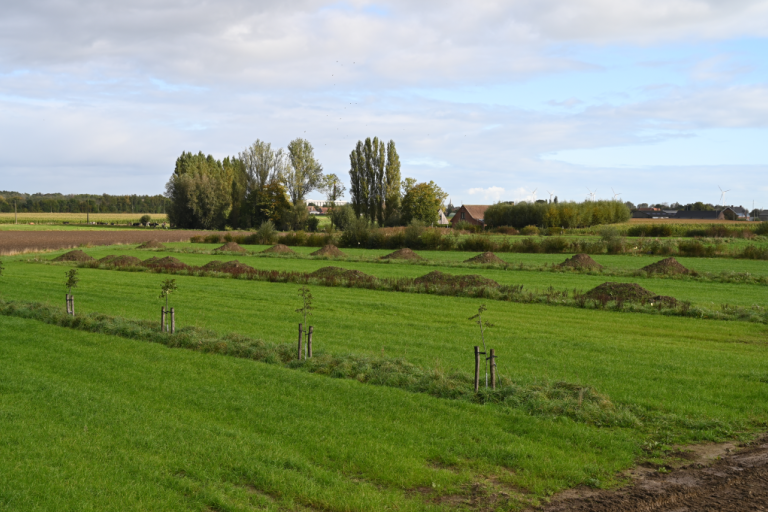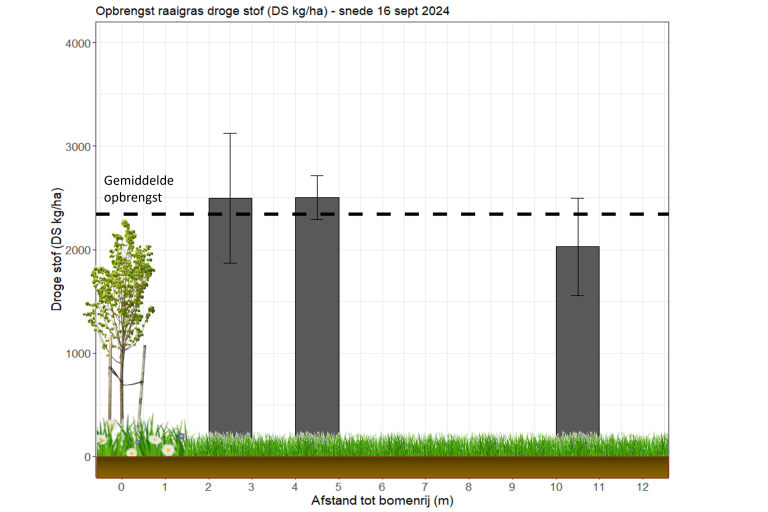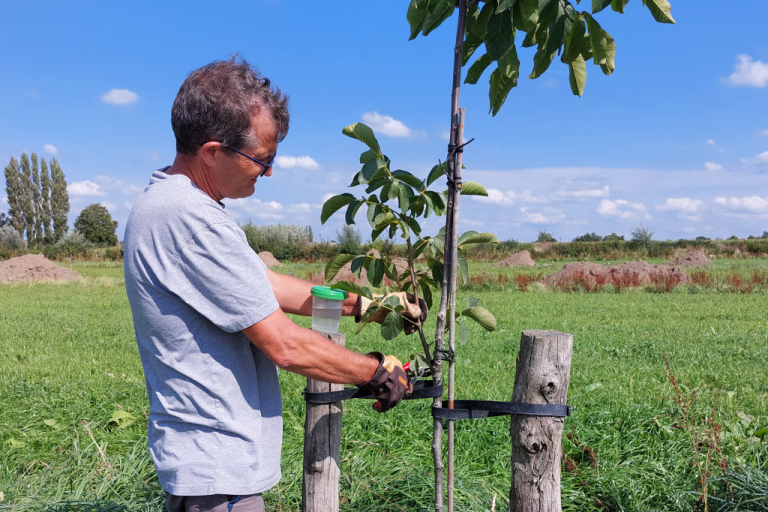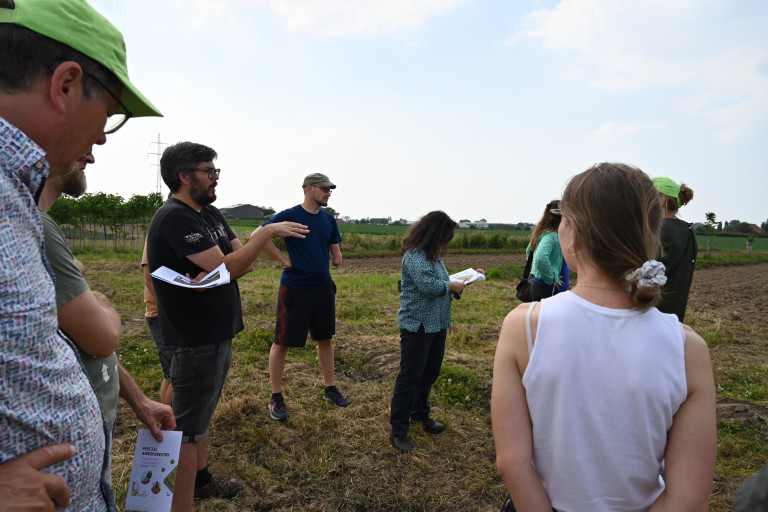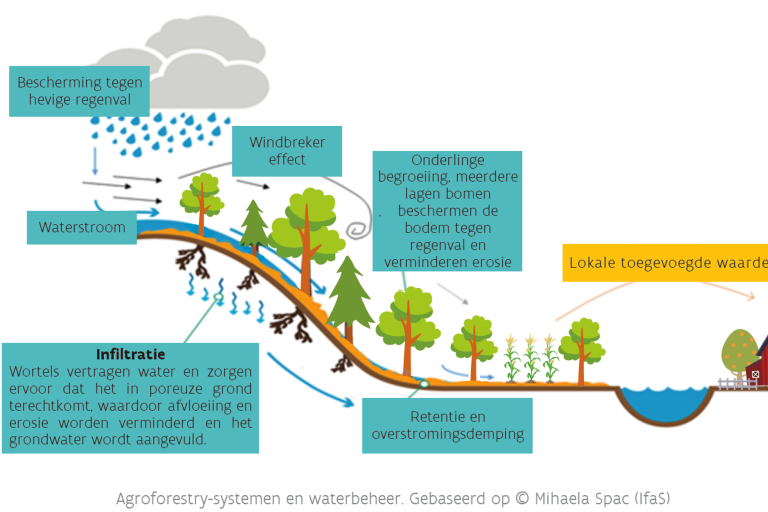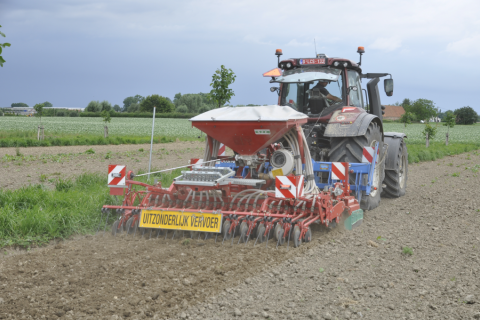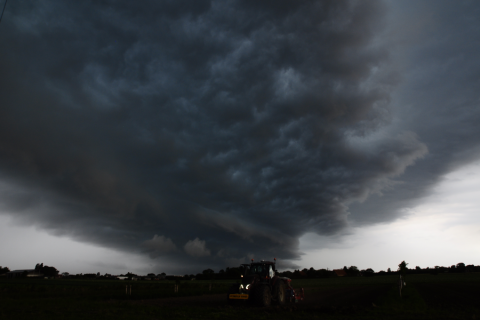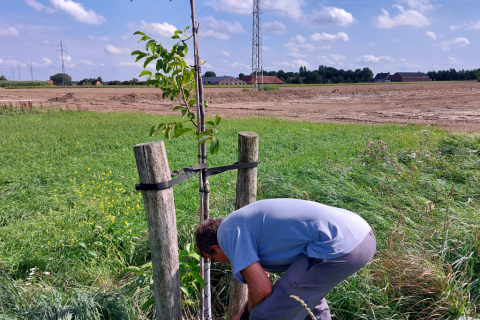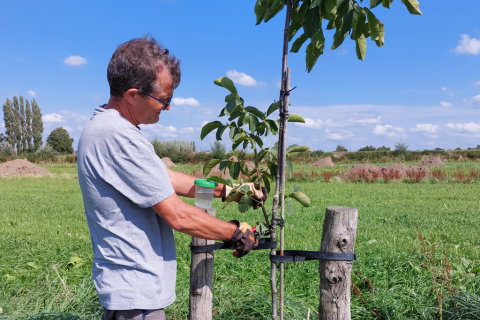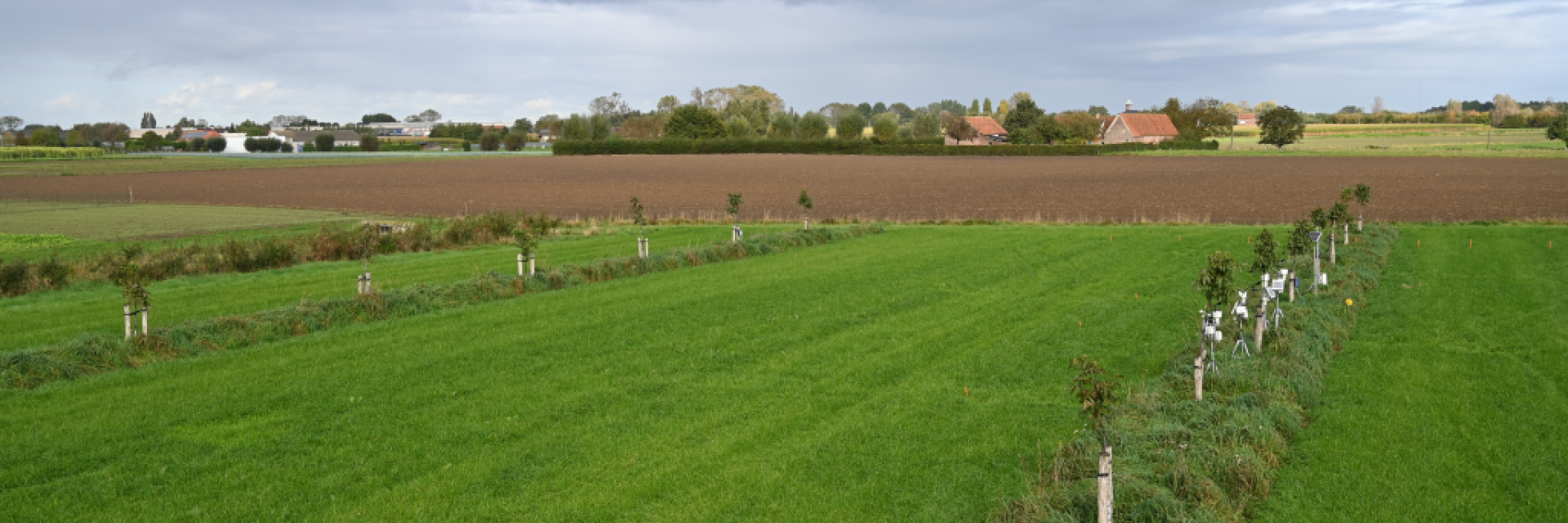
Digging Deeper: Water, not trees, remain the biggest challenge

In the series 'Digging Deeper' you can follow the developments and results of Inagro's own agroforestry plot from the front row. In this edition you can read more on the obstacles that past year’s weather seemed to place in the way for us and many farmers. The wet year led to numerous adjustments and plenty of food for thought.
Ryegrass as a contingency plan
The past year has presented significant meteorological challenges, to say the least. Abundant rainfall turned many fields into mud pools, keeping tractors idle for extended periods. This weather underscored the need for sustainable agricultural practices with effective water management.
Given these conditions, replanting the previously withered walnut trees was not an option, and crop plans for the agroforestry plot had to be adjusted. Corn, originally planned for planting, couldn’t be sown, so we opted for ryegrass instead. Ryegrass will be maintained until spring 2025, after which it will be mechanically terminated multiple times over the summer, with winter wheat planting planned for fall 2025.
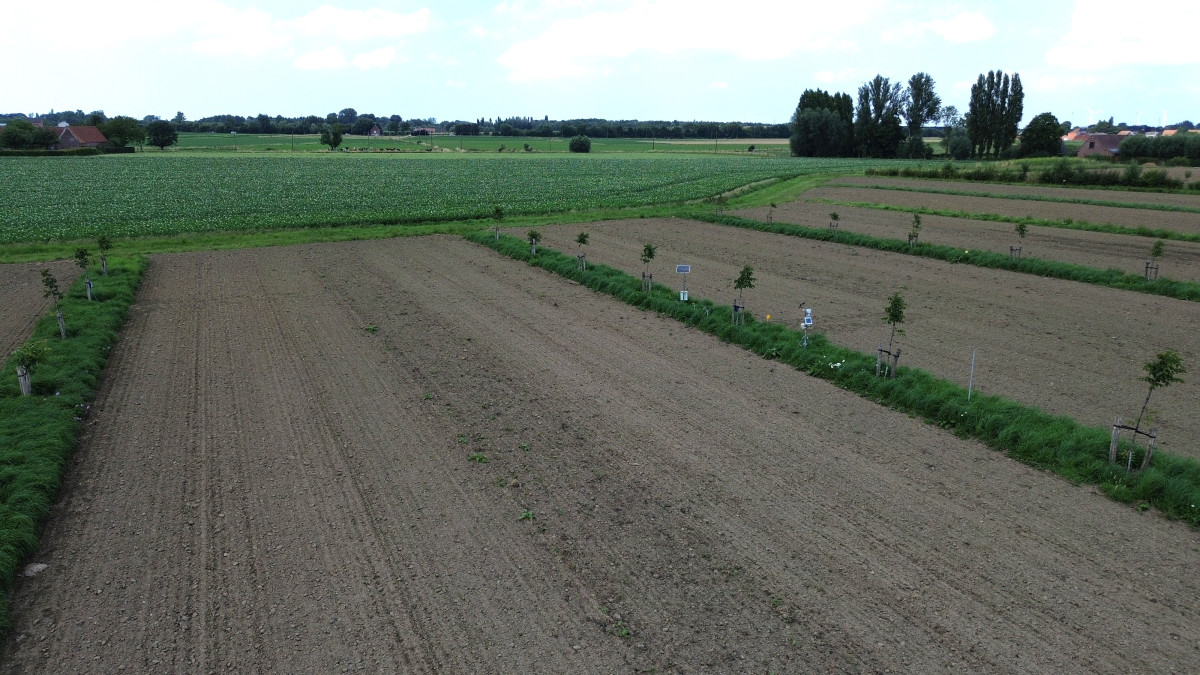
The choice for ryegrass was a practical one. The wet year exposed weaknesses in water management on the plot, so additional ground work will be done during this growing season and coming winter. Because these operations will inevitably damage the crop, ryegrass—a low-cost crop—was chosen as a temporary ground cover while awaiting soil improvements. Since Inagro doesn’t have livestock, the harvested ryegrass will be used for biogas production rather than feed.
The plot is also facing significant weed pressure from broad-leaved dock (Rumex obtusifolius), stemming largely from historical land use before planting the trees. Frequent mowing combined with approved crop protection in ryegrass was recommended by our experts as a strategy to control this issue.
The planned ground works should improve drainage to the adjacent creek. The two rows of walnut trees in the wettest zone will be replanted next winter on a slightly raised slope or 'beetle bank'. This will ensure that in the future the trees will not have their feet in the water again for a long time and we will also house more useful insects on our plot. In the picture on the left you can see the earth ready for the construction of the beetle banks, which will start as soon as the permit is obtained.
No impact of young trees on intercropping
The ryegrass could finally only be sown on July 18. Four weeks later, a first flail cut followed as a weed cut. A spray directed against sorrel (Starane Forte) followed in early September. The first (and for now only) light cut was carried out on September 16.
As with the cultivation of leeks in 2023, we did not yet see any noticeable impact of the young trees on grass yields. Zones in the middle between the tree rows showed the same yields as the zones along the trees. So the minus yield at plot level is limited to the loss in cultivation area due to the tree rows. Therefore, any plot-level yield reduction remains limited to the space lost to the tree rows.
Pruning the walnuts
Although two rows of trees need to be replanted, we see that the other three rows are doing very well. Most walnut trees formed nice long shoots this summer and seem to be doing well.
The first few years after planting, it is best not to prune a walnut too much. Certainly the variety we planted here (Broadview) does not require much pruning. Nevertheless, we already conducted a first light pruning last summer to encourage a longer branch-free trunk, which will allow machines to pass easily between rows in the future. Walnuts are best pruned while still in leaf. We pruned any root storage, stem shoots and competing top shoots.
Agroforestry and water management
In previous editions of “Digging Deeper,” we discussed plans for ground work to improve water management on our plot. But actually, we are counting mainly on our trees to improve water management in the future and make our plot more resilient to both wet and dry periods.
To study the trees’ impact on water management, Inagro recently joined the European Life project ‘AFaktive,’ one of the first projects in Flanders focusing on the role of agroforestry in improving water management at the plot and area levels. This summer, project partners visited our plot.
Some advantages at a glance
Trees, and thus agroforestry, can influence water management on and around the plot in many ways. Both on flat and sloping plots, they can add value to your plot in both wet and dry conditions. Trees ensure:
- increased infiltration of surface water,
- higher water retention in a carbon rich soil,
- windbreak and consequently less evapotranspiration in the intermediate crops,
- less runoff and erosion (especially on sloping land)
- ...
Model shows rainwater runoff
An expert from German AFaktive partner Hydrotec, mapped the relief of our agroforestry plot (framed in yellow) and those around it with a drone. He then simulated a heavy rainstorm and through modeling we can see how the rainwater moves across these plots and where it accumulates.
The eastern half of our agroforestry plot gets a lot of runoff water to swallow. This is also the zone where we observe problems in practice. After the execution of the earthworks, we do this exercise again and can visualize the impact. This also allows us to estimate the impact of the trees on water management in the longer term.
New Video!
As part of the recent agroforestry event “Farming with Trees: The Road to 2035,” a new video of our agroforestry plot was created. Watch it here!



